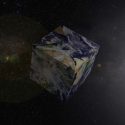Out of all the planets in the Universe, Earth is clearly the best for life, right? Wrong. Earth may be great, but scientists have discovered a few worlds that could be even better for life. Behold, KOI 5715.01. Most of the contenders on our superhabitable planet list aren’t the ones you could visit anytime soon. They are very far away.
The top spot is held by one 3,000 light-years away from our Solar System. KOI 5715.01 would appear to satisfy the most basic requirement for supporting life. It exists in the Goldilocks zone of its star. So conditions wouldn’t be too hot or too cold for a key life-supporting ingredient to exist on its surface. Liquid water. But it would also check off many boxes to be considered superhabitable.
The planetary system it belongs to could be about 5.5 billion years old, which would make it around one billion years older than our own Solar System. And the planet would almost fit the size requirement. When looking for superhabitable worlds, scientists keep their eyes peeled for planets that have a mass up to 1.5 times that of our planet. And they should be about 10% larger too.
This size difference would help the planet retain heat. And if its average temperature was about 5 °C (8 °F) higher than Earth’s, this exoplanet could have even richer biodiversity. Well, being almost double the size of Earth, KOI 5715.01 might overshoot this condition a bit. Besides, studies indicate that this planet is actually colder than Earth. But there’s still hope.
With the right atmospheric composition, a strong greenhouse effect could raise temperatures to the desired level. And as far as the superhabitable worlds go, we’re just getting started. Approximately 2,700 light-years away would be Kepler-69 c. This super-Earth could be around 7 billion years old.
This puts it perfectly in the estimated 5 to 8 billion age range for superhabitable planets. This range is based on the 3.5 billion years it took for complex life to appear on Earth. So the best chance for finding life could be on a planet a little older than us. Only this exoplanet could be a little too big to be superhabitable. It has a mass almost four times that of Earth.
A rocky planet this big could have a single colossal continent that would have huge deserts in its center. But the coastline washed by Kepler’s ocean could be your perfect spot to move to. Our next super-Earth shares a similar name, Kepler-1126 b. Except it would be located ever so slightly closer to home.
This planet is about 2,073 light-years away and belongs to a system that is 7.5 billion years old. It also orbits a yellow dwarf star much like our own. Only Kepler-1126 b is 2.5 times closer to its star than Earth is to the Sun. But that’s no big deal. Because the star Kepler-1126 b orbits is cooler than ours. So the habitable zone would exist in a range much closer in proximity to it.
If you aren’t feeling this nearness to a scorching hot star, there’s another super-Earth on our list. And it’s at a reasonable distance from home. SPECULOOS 2c is located only 106 light-years away. Not that its proximity gives it any kind of advantage. It would still take you well over 200,000 years to travel to this super-Earth. And that’s if you moved at the speed of NASA’s Parker Solar Probe, the fastest probe ever launched.
SPECULOOS 2c does look promising, though. It’s part of a system that is about 7 billion years old. It’s about 40% larger than There’s also potential for it being a rocky planet, just like ours. Despite the fact that it also exists in a habitable zone, its red dwarf star is still very small. It’s only about 15% the size of our Sun. So this planet orbits around the star at a very close distance.
This close distance could mean that SPECULOOS 2c is tidally locked to its star. This super-Earth takes 8.5 days to make one full rotation on its axis, as well as one orbit around its star. That would leave one side of the planet in constant daylight, with the other in endless night.
All this means that life could be possible in the terminator zone, the thin strip of land between these two sides. We just need to get a better look to find out for sure. But with all these candidates so far away, wouldn’t it be nicer if the planets in our own Solar System were a little more habitable?
Sources
- “Stop Looking For An ‘Earth 2.0,’ Say Scientists As They Detect An Even Better ‘Superhabitable’ World”. Jamie Carter. 2020. forbes.com.
- “In Search for a Planet Better than Earth: Top Contenders for a Superhabitable World”. Dirk Schulze-Makuch, Rene Heller and Edward Guinan. DOI: 10.1089/ast.2019.2161. 2020. liebertpub.com.
- “Kepler-1126 b”. 2022. exoplanets.nasa.gov.
- “Kepler-69C: Super-Venus”. 2022. nasa.gov.
- “This Just-Discovered Super-Earth May Be Our Next Best Chance Of Finding Aliens”. Kiona Smith. 2022. inverse.com.



























